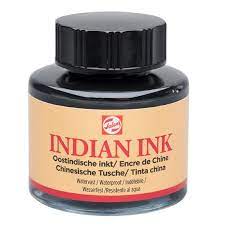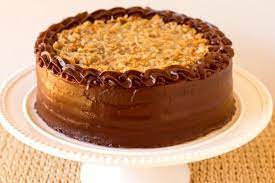A Misnomer refers to an inappropriate designation for a person, place or an object. It arises primarily due to two reasons, either due to the fact that a particular thing was named before its true nature was known or an earlier form of a certain something has been changed and its name is unsuitable to that. However, a misnomer cannot be mistaken for a popular misconception but it could definitely be described as a word that someone uses misleadingly. Food misnomers are a common phenomenon involving food facts, food assumptions, and food myths. This blog briefly discusses some general misnomers that are well-known.
White chocolate
There is no denying the fact that white chocolate is popular and liked as well as relished universally. The core constituents of white chocolate include sugar, cocoa butter, milk products, vanilla, and lecithin. Chocolate liquor, the main element that is used in chocolates, is derived from the nibs inside cocoa beans that have been ground, dried or roasted. This element is missing in white chocolate and is replaced by milk solids. During the process of manufacturing chocolate, the cocoa beans are separated from the fatty content – that is, into white and dark chocolate. However, while making white chocolate, no cocoa mass is added back and cocoa butter is the only ingredient used along with vanilla flavoring. Therefore white chocolate cannot be called ‘Chocolate’.
*We do not claim any copyright in the above image. The same has been reproduced for academic and representational purposes only”.
Indian ink
Indian ink is an essential medium that’s been used by artists since ancient times. Its composition includes carbon black (traditionally soot and ash from all sorts of burnt things like bones and tar), mixed with a binder which is usually made up of water or a gum or resin-based solution. The reason why this is a misnomer is because this ink originated in China but when it was imported to Europe via India it was termed as “Indian ink”. It is mainly used in sketchbooks, mixed media work or for painting. This ink can be applied via pens and brushes but necessary precaution has to be taken by the user as once it has dried up, it is impermeable.
*We do not claim any copyright in the above image. The same has been reproduced for academic and representational purposes only”.
German chocolate cake
Without a doubt, cakes are a must on every occasions – be it birthday parties or wedding anniversaries. This delicacy comprises several chocolate layers which are coated with coconut and pecans. Having originated in the United States back in the 19th century, its name is a misnomer due to a mere punctuation error. Sam German invented the concept of a chocolate bar to be used for baking. In his honour, this product was named 'Baker’s German Sweet Chocolate'. However, the double possessives are tough to pronounce due to which most publishers didn’t include the “s” when they wrote about it. This is how the name came into being and eventually became a classic American dessert.
*We do not claim any copyright in the above image. The same has been reproduced for academic and representational purposes only”.
French Fries
An ideal blend of salt and crisp, French fries are well-liked by people all over the world. Their affordability due to the cheap and easy-to-grow ingredient i.e., the potato adds to its popularity. This famous snack has roots in Belgium, a fact that many are unaware of. This misnomer stems from a geographical error that took place during World War I. In actuality the American soldiers who were situated in Belgium accidentally believed that they were in France, the reason being that French is spoken in certain parts of Belgium, where they were stationed. These soldiers christened the potato fries as “French Fries”.

*We do not claim any copyright in the above image. The same has been reproduced for academic and representational purposes only”.
Bombay Duck
Bombay duck which is also famously called as bombil, bummalo, boomla is actually a fish. According to the BBC, there are a few theories as to how the fish got its moniker, the most popular of which is that the name came from the British mail trains that huffed odoriferous orders of dried fish from the city to the interiors of India. These wagonloads became known as ‘Bombay Dak.’ (The word dak means ‘mail’).
Bombay duck is preferred to be eaten either fresh or traditionally dried in the sun in order to prevent its soft flesh from spoiling. However, in India, a common practice is drying the Bombay duck in the sun instead of freezing and canning. This led the European Commission to ban the import of Bombay duck from India in 1977 fearing bacterial contamination.
While the Indian High Commission launched a “Save Bombay Duck” campaign and urged the European Commission to adjust the regulations for dried bombil, David Delaney, a British businessman and a lover of Bombay duck, studied the packaging in Mumbai and fought against the lack of “sanitary evidence” thereby having the ban overturned. Hence Bombay duck is sun-dried in India.
*We do not claim any copyright in the above image. The same has been reproduced for academic and representational purposes only”.




